
Lithops THE BASICS
A section chiefly for anyone new to Lithops.
Lithops are succulent (juicy) plants that come from the drier areas of southern Africa, mostly to the south west. The visible part of the plant consists of two swollen leaves partially divided by a split (fissure). The top surface of the leaves is flattened to varying degrees and is often ornately marked. A single flower is produced annually from the fissure, and successful pollination results in a seed capsule that is opened by the rain.
In cultivation Lithops require a well drained gritty compost and sunlight. The plants only require water during the late spring or summer (their growing season) and only when they show it is needed by way of wrinkling. If in doubt do not water; these are desert plants and do not like wet feet. Once flowering occurs, usually in the autumn, no further water should be given until the plants have completely re-newed themselves, a process that takes around 6 months. The old leaves transfer their water to new leaves which gradually appear within the fissure. Eventually the old growth is reduced to a withered shell which provides a little protection to the new growth. Only when that process is completed can watering be contemplated. In winter cultivated Lithops should be kept completely dry and frost free.

Lithops like lots of sunshine but can easily scorch behind glass. It is therefore preferable to give them maximum ventilation, although some form of shading may also be necessary during the hottest parts of the year. There is a balance to be struck between shade and water, because too much shade can result in tall plants especially if overwatered. In nature Lithops generally grow low to the ground and a good cultivated specimen will maintain that trait. As in the example on the right, an individual Lithops can be nicely housed in just a 2" (5cm) square pot.
These are fascinating plants that are easy to grow once their needs are understood. They have become increasingly popular in cultivation, and many new forms created or stabilised by selective breeding. These are the cultivars (cultivated varieties) which delight many greenhouse growers, but are probably best avoided until the basics are mastered.

The genus Lithops N.E.Br. was set up in 1922 by Dr. Nicholas Edward Brown, hence the “N.E.Br.” suffix. Within the genus the most significant rank is that of species, and the following is a brief overview of that subdivision within the genus Lithops N.E.Br.. Where a species is further sub-divided into subspecies (subsp.) and or variety (var.), examples are also given. Most of my knowledge, and therefore the basis of the brief notes that follow, is the research undertaken over many years by Professor Desmond Cole and his wife Naureen Cole. The reader is urged to consult their land-mark monograph on the genus, Lithops Flowering Stones (published by Cactus & Co. in 2005, ISBN 88-900511-7-5), but where that is not possible it is hoped these short notes will be of some help and encourage further observation and research into these remarkable plants.
As this section is primarily aimed at people new to Lithops the terminology used has been simplified, and author citations omitted. The cultivars that derive from each species (and the named hybrids) are depicted together via a link. For a complete check-list of Lithops at all ranks please consult the Classification section of Lithops Scrapbook IV within this web-site. Where size is mentioned it is approximate and in relation to other Lithops, all of which are small plants ranging from less than half an inch to a couple of inches or so in head (two fused leaves) diameter.
According to Cole classification the genus Lithops N.E.Br. is divided at the rank of species as follows.
Lithops amicorum


Size: Small heads mostly in a small clump.
Top of leaf shape (facial profile): Flat to slightly convex and smooth.
Colours: Pale grey with blue tinge.
Markings: Generally a grey mottling, sometimes flecked with brown.
Flower: White and large.
(Further noted in Lithops Scrapbook 1 via the link on the right.)
Lithops aucampiae
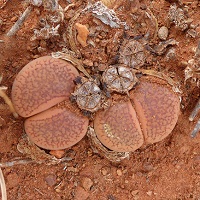
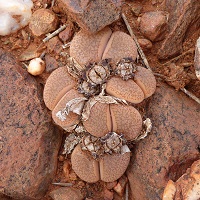


Size: Medium to large heads mostly in a small clump.
Facial profile: Flat to slightly convex and smooth.
Colours: Mostly various shades of brown.
Markings: Range from fine dark lines (channels) to wide dark areas (windows).
Flower: Yellow and large.
Subdivisions:
Subsp. (subspecies) aucampiae var. (variety) aucampiae encompasses the variability documented above;
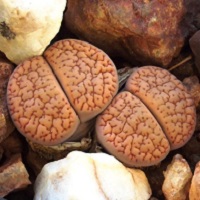

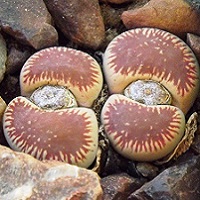


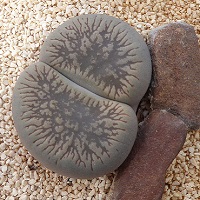
Cultivars of Lithops aucampiae
Lithops bromfieldii
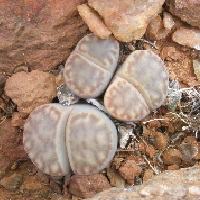

Size: Medium heads mostly in a small clump.
Facial profile: Flat to slightly convex and sometimes lumpy (rugose).
Colours: Mostly various shades of brown or grey, often with bold red flecks or lines (rubrications).
Markings: Generally a smudged or dotted pattern.
Flower: Yellow and variable in size.
Subdivisions:
Var. bromfieldii encompasses the variability documented above;






Cultivars of Lithops bromfieldii
Lithops coleorum


Size: Small heads mostly in a small clump.
Facial profile: Rounded and smooth.
Colours: Mostly various shades of brown, grey and beige.
Markings: Generally a dotted branched pattern.
Flower: Yellow, small to medium in size.
(Further noted in Lithops Scrapbook 1 via the link on the right.)
Lithops comptonii


Size: Small to medium heads mostly in a small clump.
Facial profile: Flat to slightly convex and generally smooth.
Colours: Various shades of grey and beige tinged with purple.
Markings: Generally open windows with tiny lighter grey areas (islands).
Flower: Yellow with white centre, small to medium in size .
Subdivisions: Var. comptonii encompasses the variability documented above;


Cultivars of Lithops comptonii
Lithops dinteri
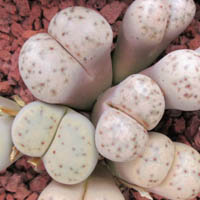

Size: Small to medium heads mostly in a small clump.
Facial profile: Flat to slightly convex and generally smooth.
Colours: Mostly various shades of grey with bold red flecks.
Markings: Red flecks and generally open windows sometimes with grey islands.
Flower: Yellow with white centre, small to medium in size.
Subdivisions:
Subsp. dinteri var. dinteri encompasses the variability documented above (photo left © Eric Collins);
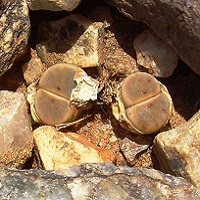
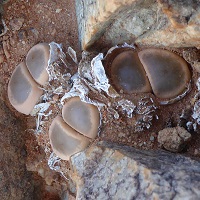


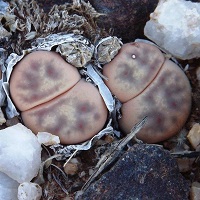

Lithops divergens


Size: Small heads mostly in a small clump.
Facial profile: Slightly convex to convex, with a deep separation (divergence) between the leaves (fissure) and smooth.
Colours: Mostly various shades of grey or green, sometimes with a blueish or pinkish tint.
Markings: Open windows often with a “frosted glass” appearance.
Flower: Yellow with white centre, small to medium in size.
Subdivisions: Var. divergens encompasses the variability documented above;
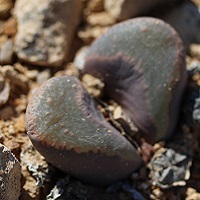
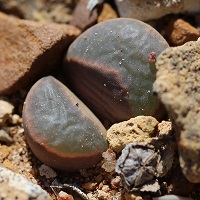
Cultivars of Lithops divergens
Lithops dorotheae
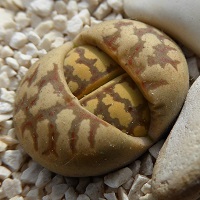

Size: Small to medium heads mostly in a small clump.
Facial profile: Convex and smooth.
Colours: Buff with darker windows containing rubrications.
Markings: Narrow to open well defined windows with bold rubrications.
Flower: Yellow, medium to large in size.
Cultivars of Lithops dorotheae
Lithops francisci


Size: Small to medium heads mostly in a small clump.
Facial profile: Flat to convex, smooth or slightly rugose.
Colours: Mostly various shades of grey.
Markings: Numerous dusky dots sometimes coalescing into windows.
Flower: Yellow and small in size.
Cultivars of Lithops francisci
Lithops fulviceps
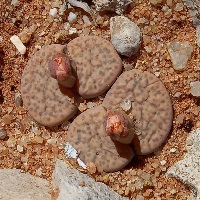

Size: Medium to large heads mostly in a small clump.
Facial profile: Flat to slightly convex and somewhat rugose.
Colours: Mostly various shades of grey, brown or beige.
Markings: Multiple dusky dots.
Flower: Yellow and medium in size often with long stalk (pedicle).
Subdivisions: Var. fulviceps encompasses the variability documented above (photos X2 © Ronnie Uijs);




(Further noted in Lithops Scrapbook 1 via the link on the right.)
Cultivars of Lithops fulviceps
Lithops gesinae


Size: Small to medium heads either singular or in a small clump.
Facial profile: Convex and smooth.
Colours: Mostly various shades brown and beige.
Markings: Well defined windows or channels often with multiple islands and dots.
Flower: Yellow and medium to large in size.
Subdivisions: Var. gesinae encompasses the variability documented above;
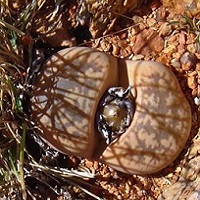

Lithops geyeri


Size: Small to medium heads mostly in a small clump.
Facial profile: Slightly convex, smooth and often slim at the fissure.
Colours: Mostly various shades of grey.
Markings: Narrow channels to open sometimes mottled windows.
Flower: “Clear yellow” with a small, “indistinct or absent” white centre and a small to large size.
Lithops gracilidelineata




Size: Medium to large heads, mostly but not always singular.
Facial profile: Flat to slightly convex and somewhat rugose.
Colours: Mostly various shades of grey or brown.
Markings: Narrow channels sometimes forming a network.
Flower: Yellow and medium to large in size.
Subdivisions:
Subsp. gracilidelineata var. gracilidelineata encompasses the variability documented above (photo bottom right © Tok Schoeman);




Cultivars of Lithops gracilidelineata
Lithops hallii


Size: Medium to large heads mostly in a small clump.
Facial profile: Flat to slightly convex and sometimes rugose.
Colours: Mostly various shades of beige, brown or grey.
Markings: Pronounced margins, well defined windows and small islands.
Flower: White and medium to large in size.
Subdivisions:
Var. hallii encompasses the variability documented above;


Lithops helmutii


Size: Small to medium heads mostly in a small clump.
Facial profile: Convex or humped with slightly divergent leaves and smooth.
Colours: Mostly various shades of pale green and grey.
Markings: Generally a mottled window.
Flower: Yellow with white centre and medium in size.
Lithops hermetica


Size: Small to medium heads mostly in a small clump.
Facial profile: Convex, smooth to slightly rugose.
Colours: Mostly various shades of grey and white.
Markings: Broad channels to mottled windows.
Flower: Yellow and small in size.
(Further noted in Lithops Scrapbook 1 via the link on the right.)
Cultivars of Lithops hermetica
Lithops herrei


Size: Small to medium heads mostly in a small clump.
Facial profile: Convex and smooth to slightly rugose.
Colours: Various shades of grey.
Markings: Narrow channels to open windows.
Flower: Yellow (sometimes “bronze-yellow”) with a ”proportionally large” white centre and an overall small size.
Lithops hookeri
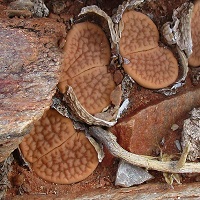

Size: Medium to large heads mostly in a small clump.
Facial profile: Flat to slightly convex and rugose.
Colours: Various shades of brown.
Markings: Network of narrow to wide channels.
Flower: Yellow and medium to large in size.
Subdivisions:
Var. hookeri encompasses the variability documented above (photos X2 © Eric Collins);



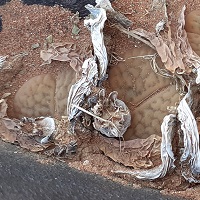



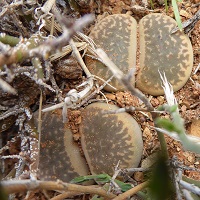
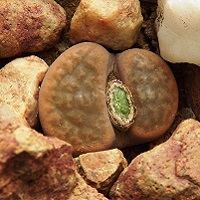



Lithops julii

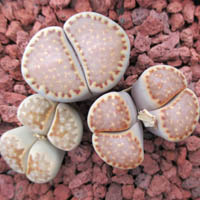


Size: Small to medium heads mostly in a small clump.
Facial profile: Mostly flat or slightly convex and slightly rugose.
Colours: Various shades of grey and brown.
Markings: Variable. Sometimes a network of narrow to wide channels, sometimes open or obscure windows. In subsp. julii only there is often a brown smudge (lip smear) along the margins of the fissure.
Flower: White and medium to large in size.
Subdivisions:
Subsp. julii encompasses the variability documented above (top photos X2 & bottom left photo © Eric Collins);



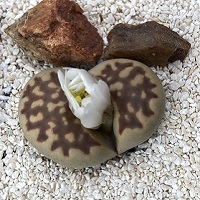
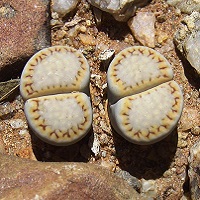
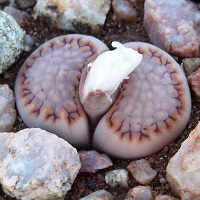
Lithops karasmontana

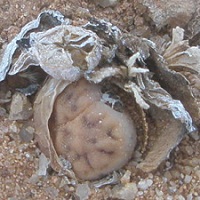
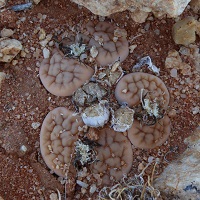

Size: Medium to large heads mostly in a small clump.
Facial profile: Mostly flat or slightly convex with humped islands and therefore slightly rugose.
Colours: Various shades of grey and brown.
Markings: Variable. Sometimes a network of narrow to wide channels and sometimes obscure windows.
Flower: White and medium to large in size.
Subdivisions:
Subsp. karasmontana var. karasmontana encompasses the variability documented above;


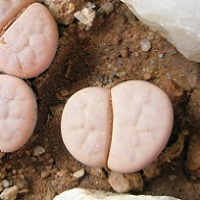

(further noted in Lithops Scrapbook 2 via the link on the right;)
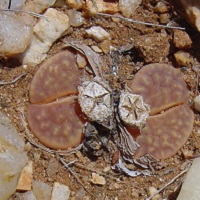



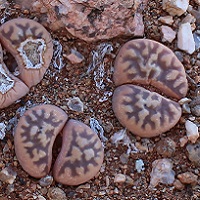

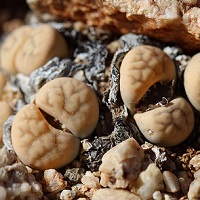

Cultivars of Lithops karasmontana
Lithops lesliei




Size: Medium to large heads mostly in a small clump.
Facial profile: Mostly flat or slightly convex and mostly smooth.
Colours: Various shades of grey, green and brown.
Markings: Many small islands within a well defined window giving a “filigree” effect.
Flower: yellow and medium to large in size.
Subdivisions:
Subsp. lesliei var. lesliei encompasses the variability documented above;

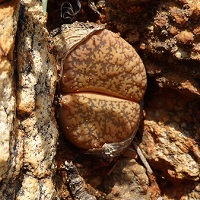


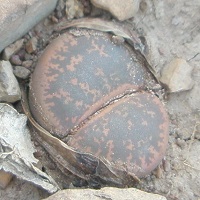




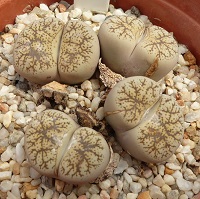


Lithops marmorata


Size: Medium to large heads mostly in a small clump.
Facial profile: Flat to slightly convex, mostly smooth and somewhat divergent.
Colours: Various shades of grey.
Markings: A “marbled” appearance with medium to broad channels or open windows with islands.
Flower: White and medium to large in size.
Subdivisions:
Var. marmorata encompasses the variability documented above;


Cultivars of Lithops marmorata
Lithops meyeri


Size: Medium heads often in a small clump.
Facial profile: Flat to convex, smooth and divergent. Bow sided, triangular leaves as viewed from above.
Colours: Various shades of grey.
Markings: Diffuse window sometimes also with diffuse islands.
Flower: Yellow with white centre and medium in size.
Lithops naureeniae


Size: Small to medium heads often in a small clump.
Facial profile: Slightly convex, slightly divergent and smooth.
Colours: Various shades of grey, green or reddish brown.
Markings: Ranges from narrow to broad channels or open windows.
Flower: Yellow with white centre and medium in size.
Cultivars of Lithops naureeniae
Lithops olivacea


Size: Small to medium heads often in a small clump.
Facial profile: Flat to slightly convex and smooth.
Colours: Various shades of green, grey and white.
Markings: Open windows sometimes flecked with tiny light islands.
Flower: Yellow with white centre and medium to large in size.
Subdivisions:
Var. olivacea encompasses the variability documented above;
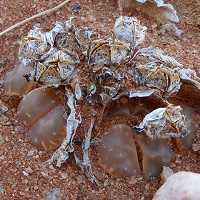
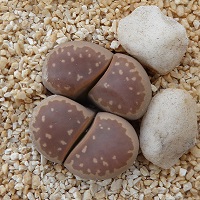
Lithops optica

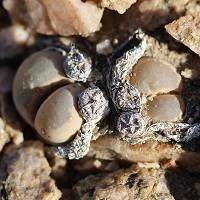
Size: Small to medium heads often in a small clump.
Facial profile: Convex, smooth and somewhat humped.
Colours: Various shades of grey.
Markings: Ranges from obscure to open windows.
Flower: White and small in size.
Lithops otzeniana


Size: Small to medium heads often in a small clump.
Facial profile: Convex and smooth.
Colours: Various shades of brown, green or grey.
Markings: Distinct “scalloped” margins with narrow to broad channels or open windows.
Flower: Yellow with white centre and small to medium in size.
Cultivars of Lithops otzeniana
Lithops pseudotruncatella




Size: Small to large heads either singular or in a small clump.
Facial profile: Flat to slightly convex and mostly smooth.
Colours: Various shades of grey and brown.
Markings: Narrow to broad channels with numerous dusky dots.
Flower: Yellow and medium to large in size.
Subdivisions:
Subsp. pseudotruncatella var. pseudotruncatella encompasses the variability documented above;



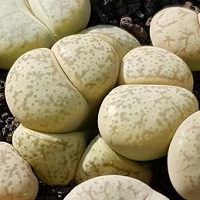

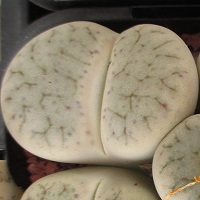

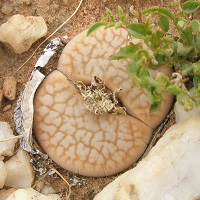


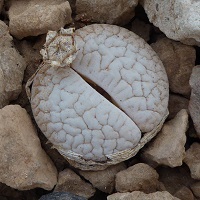

(further noted in Lithops Scrapbook 2 via the link on the right;)


Cultivars of Lithops pseudotruncatella
Lithops ruschiorum

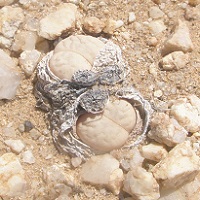
Size: Small to large heads often in a small clump.
Facial profile: Markedly convex and mostly smooth.
Colours: Various shades of grey and brown.
Markings: Narrow channels or a blank face.
Flower: Yellow and small to medium in size often with a long pedicle.
Subdivisions:
Var. ruschiorum encompasses the variability documented above;
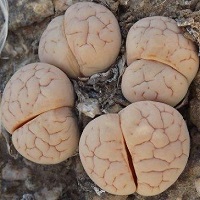

Cultivars of Lithops ruschiorum
Lithops salicola
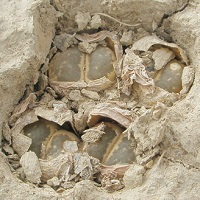

Size: Small to large heads often in a small clump.
Facial profile: Flat to slightly convex and smooth.
Colours: Various shades of grey.
Markings: Open windows often with small islands.
Flower: White and small to large in size.
Lithops schwantesii

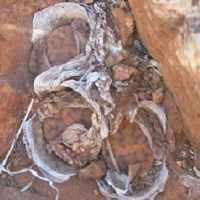
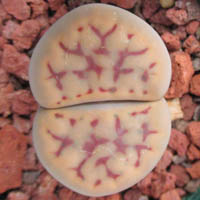

Size: Small to large heads often in a small clump.
Facial profile: Flat to slightly convex and mostly rugose.
Colours: Various shades of brown and grey often with strong rubrications.
Markings: Narrow to broad channels or mottled windows, strong rubrications and light colour margins.
Flower: Yellow and medium to large in size often with a long pedicle.
Subdivisions:
Subsp. schwantesii var. schwantesii encompasses the variability documented above (bottom photos X2 © Eric Collins);
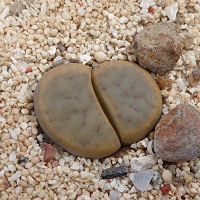
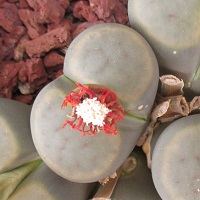
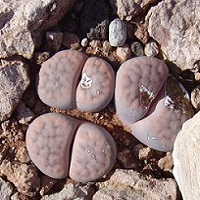
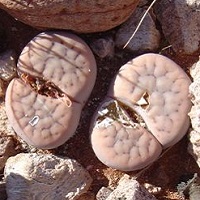

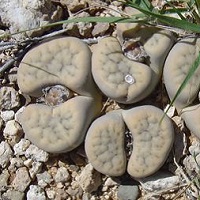
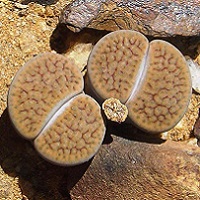

Cultivars of Lithops schwantesii
Lithops steineckeana
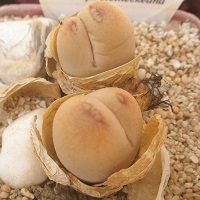

Size: Small to medium heads often in a small clump.
Facial profile: Distinctly rounded to slightly convex and smooth.
Colours: Various shades of grey and brown.
Markings: Generally an obscure face marked with various light or dark flecks.
Flower: Yellow and small to medium in size (photo right © Bernd Schlösser).
NB. This may be of hybrid or mutant origin.
Cultivars of Lithops steineckeana
Lithops terricolor


Size: Small to medium heads often in a small clump.
Facial profile: Flat to slightly convex and smooth.
Colours: Various shades of grey and brown.
Markings: Many dusky dots or mini-windows.
Flower: Yellow and small to medium in size.
Cultivars of Lithops terricolor
Lithops vallis-mariae
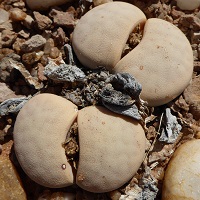
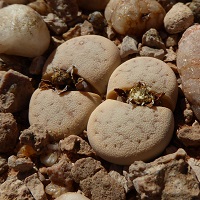
Size: Medium to large heads often in a small clump.
Facial profile: Flat to slightly convex and slightly rugose.
Colours: Various shades of grey and white.
Markings: Many tiny surface wrinkles, often blank or with flecks of brown.
Flower: Yellow and small to medium in size, often with a long pedicle.
Cultivars of Lithops vallis-mariae
Lithops verruculosa

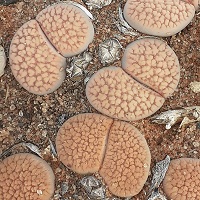
Size: Medium to large heads often in a small clump.
Facial profile: Flat to slightly convex and rugose.
Colours: Various shades of brown and grey.
Markings: Narrow to broad channels with many small red and raised dots (verruculae).
Flower: Variable. The range is from near white to yellow to pink, and small to medium in size.
Subdivisions:
Var. verruculosa encompasses the variability documented above (photos X2 © Ronnie Uijs);


Cultivars of Lithops verruculosa
Lithops villetii

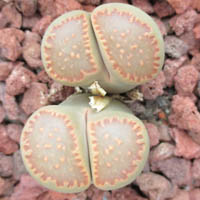
Size: Small to medium heads often in a small clump.
Facial profile: Flat to slightly convex and smooth to slightly rugose.
Colours: Various shades of grey, brown and green.
Markings: Open windows often with small islands and a distinct margin.
Flower: White and small to medium in size.
Subdivisions:
Subsp. villetii encompasses the variability documented above (photos X2 © Eric Collins);
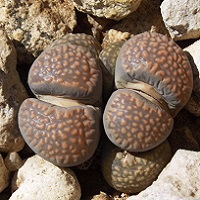

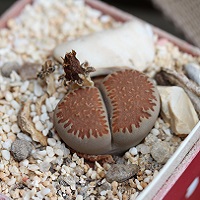

Lithops viridis


Size: Small to medium heads often in a small clump.
Facial profile: Convex, smooth and elliptic.
Colours: Various shades of green.
Markings: Open unmarked windows.
Flower: Yellow with white centre and small to medium in size.
Lithops werneri
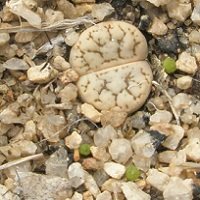
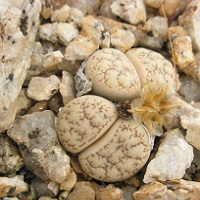
Size: Small heads often in a small clump.
Facial profile: Convex and rugose.
Colours: Various shades of grey.
Markings: Narrow to broad channels or open windows.
Flower: Yellow and small in size.